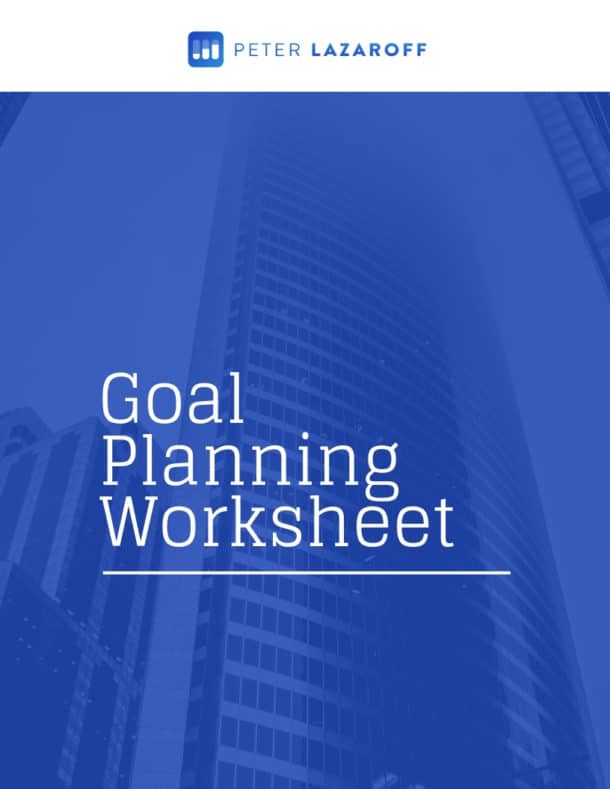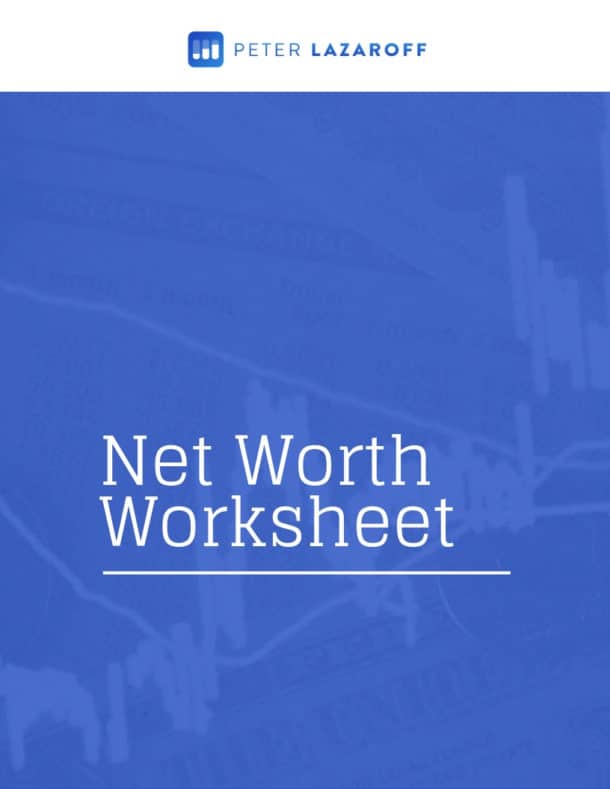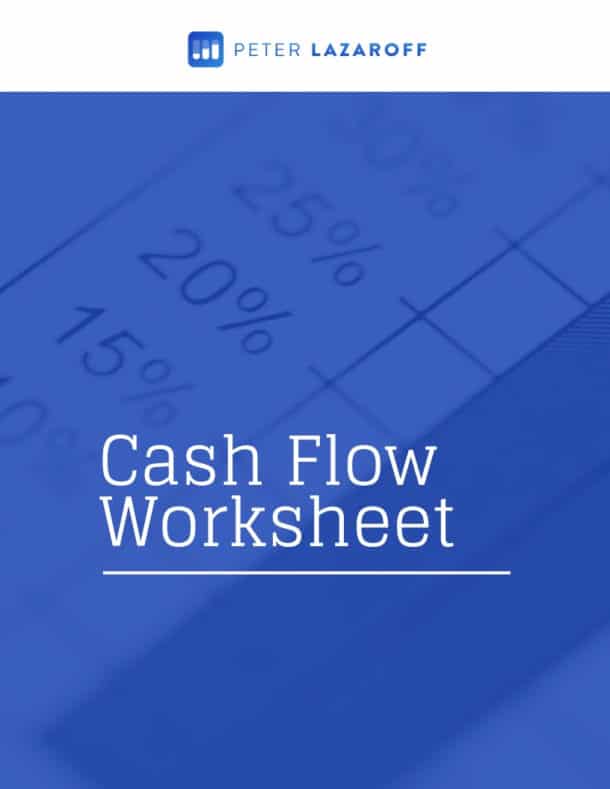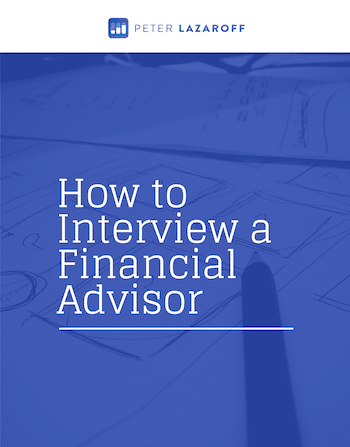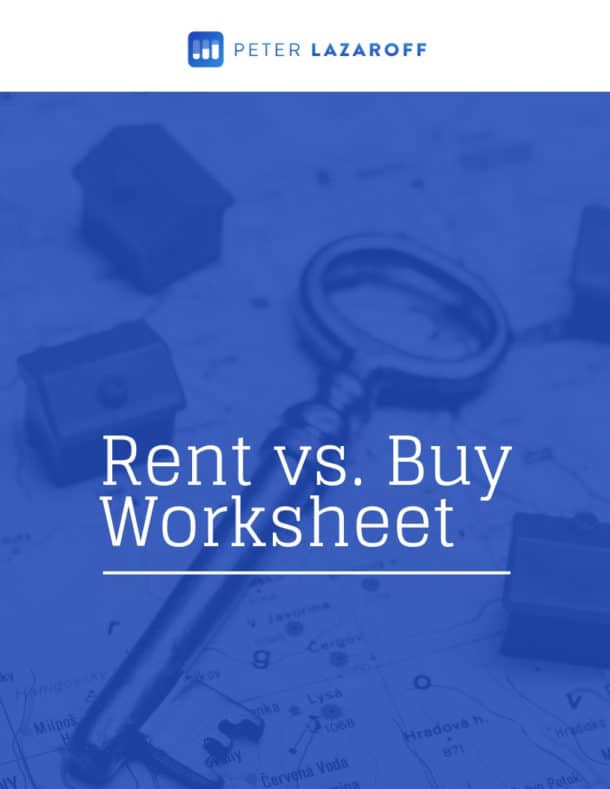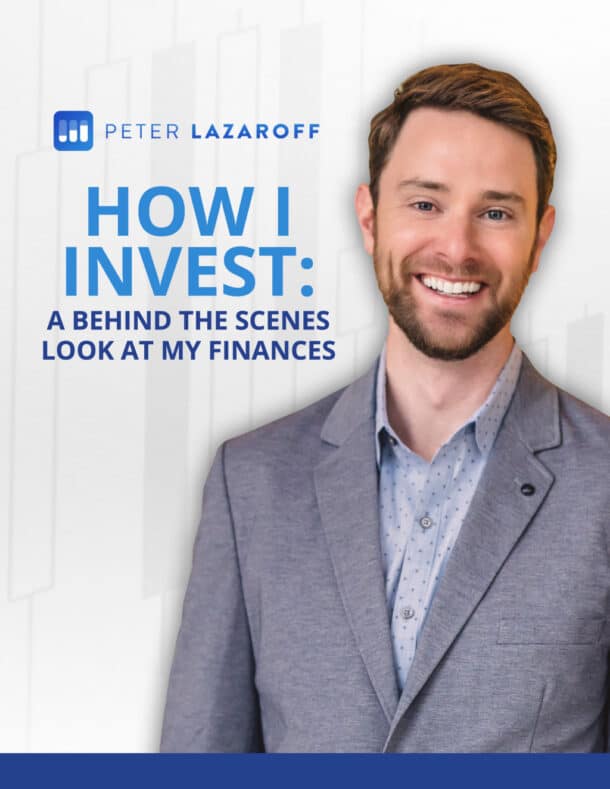Watch Now
Listen Now
Today’s conversation is one I’ve been looking forward to for a long time.
I’m joined by Fran Kinniry, a senior investment executive at Vanguard and someone who has had a tremendous impact on the financial advice profession. He is currently the head of the Investment Advisory Research Center within Vanguard’s Financial Advisor Services department.
Over the years, Fran’s research and leadership at Vanguard have influenced not just investment products, but also how advisors like myself help individuals make better long-term decisions.
In this episode, we dive deep into the evolving world of private investments—specifically private equity and private credit.
We’ll explore why companies are staying private longer, how private markets have changed, and what investors really need to understand about illiquidity, manager selection, portfolio construction, and risk.
Fran also shares some forward-looking insights about the possibility of private assets making their way into retirement plans like 401(k)s—and what that could mean for the future of investing.
If you’ve ever wondered whether private investments belong in your portfolio—or how to think about them in the context of a long-term plan—this is the episode for you.
Here are my notes from our conversation.
Sign up for my newsletter so you can easily reply to my emails with your thoughts or questions for the podcast:
Why Private Markets Matter and How Illiquidity Premiums Work (2:30)
Private markets are playing an increasingly important role in investor portfolios—and Vanguard’s Fran Kinniry explained why this shift matters.
In recent years, more companies have chosen to stay private longer, changing the makeup of the market itself. Fran emphasized that Vanguard’s philosophy of “owning the market” includes adapting to this shift:
“You can’t truly own the market if you’re excluding a large part of it—like private equity.”
Private equity is simply equity that isn’t publicly traded. These companies may have chosen not to IPO, but they still represent a meaningful segment of the investable universe.
Fran explained that by including private equity, investors can potentially gain greater diversification and enhance returns—assuming they have appropriate access and the right investment partners (a key point reiterated throughout the conversation).
One important concept that comes with private investments is the illiquidity premium. Because private assets aren’t easily traded (unlike public stocks or bonds), investors have historically been rewarded for giving up liquidity.
Fran noted that across asset classes—whether it’s off-the-run Treasuries, municipal bonds, or private equity—securities with less trading volume tend to offer slightly higher returns to compensate for reduced liquidity.
Historically, private equity has delivered an illiquidity premium of about 300 basis points (or 3%). However, Fran cautioned that as more capital flows into private markets, that premium is likely to shrink.
Still, even if the premium were cut in half, Fran pointed out that for investors with a long time horizon and limited liquidity needs, capturing a 100–150 basis point advantage could meaningfully boost outcomes over decades.
He also challenged listeners to rethink how much liquidity they truly need. Many investors maintain portfolios that are 100% liquid, even though their actual spending needs are years—or even decades—away. Fran encouraged investors to match their portfolio liquidity to their real-world needs, opening the door to capturing potential premiums from illiquid investments when appropriate.
Why Manager Selection Is Critical in Private Equity (5:25)
Accessing private equity isn’t enough—you have to select the right managers.
Fran emphasized that in both public and private markets, performance dispersion among managers is wide, but it’s even wider in private equity—about two to three times greater.
In public markets, active managers are often criticized because, on average, they underperform after fees. However, Fran clarified that the issue isn’t active management itself—it’s average active management.
“If you can find the top quartile active manager, even in public markets, they actually have positive performance after fees.”
Vanguard’s long history of successful active management in public equity and fixed income demonstrates that combining true talent with fair costs can lead to outperformance.
Applying that same philosophy to private equity, the stakes become even higher. With greater dispersion between the best and worst performers, choosing an average private equity manager could be far worse than simply investing in public markets.
“You definitely do not want the median or below-median private equity manager,” Fran warned.”
Yet accessing top-quartile managers isn’t easy. Most of the best private equity firms are oversubscribed and closed to new investors.
This creates a major hurdle for individuals trying to invest directly. Fran explained that Vanguard’s size, brand, and four decades of expertise in sourcing and selecting managers allow it to access world-class private equity opportunities on behalf of its investors.
For individuals or advisors without these advantages, partnering with a trusted institution becomes crucial. Otherwise, the risk of winding up with subpar private equity exposure—and disappointing returns—is simply too high.
Understanding the Growth of Private Credit and Its Risks (10:50)
The surge in private credit really took off after the Global Financial Crisis (GFC). Traditionally, banks had been the primary lenders for companies with lower credit ratings—think high-yield loans and below-investment-grade borrowers.
However, post-GFC regulations forced banks to clean up their balance sheets and reduce their risk exposures, particularly to high-risk lending. As banks pulled back, a massive opportunity emerged for non-bank lenders to step in and fill the gap.
Private lenders—often private equity firms, asset managers, and alternative investment funds—began underwriting loans directly to companies. This shift created an entirely new ecosystem of private lending, dramatically expanding the size and accessibility of private credit markets.
Today, private credit has become a major asset class in its own right. It offers higher yields than traditional investment-grade bonds, and in some cases, it provides more flexible terms for borrowers compared to banks.
However, Fran emphasized that private credit isn’t simply a safer or “better” bond alternative.
“It has similar characteristics to high yield or below-investment-grade debt. In other words, private credit behaves much more like equities during periods of market stress, not like traditional Treasury bonds or investment-grade corporate bonds.”
This distinction is crucial for portfolio construction.
Private credit carries higher credit risk, higher liquidity risk, and greater sensitivity to economic downturns than the kinds of fixed income most investors traditionally rely on to stabilize their portfolios.
Investors need to recognize that allocating to private credit fundamentally changes the role that fixed income plays in their portfolio. Instead of acting as a ballast during equity market downturns, private credit could amplify losses during periods of broad economic stress if not carefully sized and funded.
The Hidden Challenges of Adding Private Assets to a Portfolio (12:30)
While private equity and private credit can offer potential diversification and return benefits, integrating private assets into a portfolio isn’t as simple as adding another mutual fund or ETF.
One of the biggest hidden challenges is liquidity—or rather, the lack of it.
Unlike public investments, where you can usually sell holdings with a few clicks, private investments often lock up capital for years. In semi-liquid structures, like interval funds or tender funds, investors may have limited redemption windows, and even then, the fund can restrict withdrawals if too many investors try to exit at once.
Fran warned that in times of market stress, seeing a drop in portfolio value is one thing—but not being able to access your money when you want it adds a layer of emotional and financial strain that many investors underestimate.
Another major consideration is how private assets are funded within a portfolio. Traditionally, investors think in clean buckets: stocks for growth, bonds for stability. But private equity and private credit don’t slot neatly into these categories.
- Private equity is typically funded from the equity portion of a portfolio, and because it behaves similarly to public equities in terms of risk, the overall volatility profile may not change dramatically.
- Private credit, however, is often funded from the fixed income side—and this is where problems arise.If an investor swaps traditional investment-grade bonds for private credit, they’re introducing higher credit risk and equity-like behavior into what used to be the “safe” part of their portfolio.
Fran cautioned that this could lead to a very different experience during a market selloff. Instead of bonds acting as a stabilizer, portfolios could suffer greater drawdowns because the “fixed income” component behaves more like stocks under stress.
Moreover, investors must consider behavioral challenges.
In private investments, where pricing is less frequent and liquidity is constrained, there is a temptation to react poorly—panic when statements look bad or try to access cash during a downturn, only to find withdrawal gates or restrictions in place.
Adding private assets demands not just portfolio construction expertise, but emotional discipline to handle the long-term nature of these investments without overreacting.
Before adding private assets, investors and advisors must think deeply about liquidity needs, funding sources, risk behavior, and their ability to stay committed through market cycles.
How Much Private Equity or Private Credit Should You Own? (17:40)
When it comes to adding private assets to a portfolio, allocation sizing is one of the most important and overlooked considerations.
Starting with private equity, Fran suggested thinking about it relative to your equity allocation—not the entire portfolio.
Because private equity has risk and return characteristics similar to public stocks, it makes sense to carve out a portion of the equity sleeve rather than the fixed income sleeve.
Vanguard’s general framework is targeting 20% to 30% of the equity allocation for private equity investments.
For example:
- If you have a 60/40 stock-bond portfolio, 60% of your assets are in equities.
- 20% of that 60% would equal 12% of your overall portfolio allocated to private equity.
- So your new equity breakdown would be approximately 48% public equities and 12% private equities.
However, Fran pointed out that actually reaching your target allocation in private equity is much more complicated than with public assets.
Private equity investments typically involve capital commitments that are funded over time as managers call capital to invest in deals. Meanwhile, distributions from existing private holdings (when investments are sold) send cash back to the investor.
This slow, uneven cash flow cycle makes it extremely difficult to precisely hit a target like 12%.
Instead, investors must approach private equity investing like dollar-cost averaging—gradually building exposure through ongoing commitments, knowing that cash will be moving both in and out at different times.
“You’re almost never going to be exactly at your target percentage,” Fran explained.
Consistency and patience are key. Over time, a disciplined commitment strategy can help approximate the desired exposure, but investors must be prepared for the fact that private equity allocations naturally fluctuate.
When it comes to private credit, the allocation process is even trickier.
First, Fran emphasized that private credit behaves very differently from traditional bonds—it carries higher default risk, lower liquidity, and greater sensitivity to economic downturns—investors must think carefully about whether they truly want to substitute private credit into what used to be the “safe” side of the portfolio.
If the goal of the fixed income allocation is to provide stability and protection during equity market selloffs, then introducing private credit—which acts more like equities—could dramatically change the portfolio’s risk profile.
The other critical point to consider is that private credit generates ordinary income, which can significantly erode after-tax returns for taxable investors.
Additionally, most tax-advantaged retirement accounts (like 401(k)s and IRAs) may not allow or easily accommodate private credit investments, making implementation more challenging.
In summary, adding private assets demands not just an investment decision, but a portfolio engineering mindset.
How New Investment Vehicles Are Changing Access to Private Markets (19:15)
Historically, investing in private markets required significant resources, relationships, and patience. Investors needed to make large, long-term capital commitments directly into private funds, with minimal liquidity and little control over cash flows.
Today, however, new structures are opening access to private equity and private credit for a broader range of investors—including individuals.
Fran Kinniry explained that newer investment vehicles like interval funds, tender offer funds, business development companies (BDCs), and even private market mutual funds are reshaping how investors participate in private markets.
These vehicles aim to make private assets more accessible by offering:
- Lower minimum investments compared to traditional private funds
- Periodic liquidity opportunities (e.g., quarterly redemption windows)
- Simplified structures that function more like traditional investment funds
However, greater liquidity often comes at a cost, namely a shrinking illiquidity premium, which in turn potentially reduces the excess return investors might expect from private markets.
There are other trade-offs to consider as well:
- Asset quality: Vehicles offering more liquidity might invest in slightly different (often lower-quality) private deals to maintain flexibility.
- Portfolio construction: Semi-liquid funds must hold more cash or highly liquid assets, which can dilute the private market exposure.
- Fee structures: Some newer vehicles come with higher expenses to cover the operational complexities of offering periodic liquidity.
In other words, investors must be cautious.
Accessing private markets through a semi-liquid fund is not the same as investing in a traditional private equity or private credit fund. Simply because an investment is labeled “private equity” or “private credit” doesn’t guarantee that it offers the same return potential, risk characteristics, or investor protections as traditional private offerings.
Ultimately, access to private markets is improving—but thoughtful selection, discipline, and education remain critical.
Essential Questions to Ask Your Advisor About Private Equity and Private Credit (21:15)
Navigating the private markets successfully requires a deep understanding of the risks, access challenges, and manager selection intricacies involved.
But as Fran Kinniry explained, not every advisor is equally equipped to evaluate or manage private market investments. He recommends asking a few critical questions before trusting an advisor’s private investment recommendations:
1. What Qualifications and Experience Do You Have in Private Markets?
Investors should understand whether their advisor has specific expertise in private equity and private credit.
Key things to ask:
- How long have you been evaluating private investments?
- How often do you conduct due diligence on private managers or funds?
- Have you invested client capital in private markets before, or is this a new offering?
Experience matters because private markets behave very differently from public markets, and missteps in manager selection, liquidity management, or portfolio construction can have lasting consequences.
2. What Is Your Access to Top-Tier Private Managers?
Access is everything in private markets.
Fran emphasized that many of the top-quartile private equity managers have been closed to new investors for decades, serving only established clients like large endowments, foundations, and family offices.
Investors should ask:
- What kinds of private managers do you have relationships with?
- Can you access managers that are typically closed to the broader public?
- How do you evaluate whether a manager is top-quartile or middle-of-the-pack?
Without privileged access to top-tier managers, an investor risks winding up with average or below-average private equity or private credit exposure—which could underperform public markets after accounting for fees and illiquidity.
3. What Is Your Due Diligence Process for Private Investments?
Due diligence on private investments must go far deeper than reading a prospectus.
Investors should ask:
- How do you evaluate the quality of a private investment opportunity?
- What criteria do you use to assess the manager’s track record, investment philosophy, team stability, and alignment of interests?
- Do you perform independent research, or do you rely solely on third-party recommendations?
A rigorous, repeatable due diligence process dramatically increases the odds of achieving strong outcomes in private markets.
4. How Will Private Investments Fit Into My Overall Portfolio?
Private investments shouldn’t exist in a vacuum—they must fit into a broader portfolio strategy that balances liquidity needs, tax considerations, risk tolerance, and long-term goals.
Key questions include:
- How much of my portfolio will be allocated to private markets?
- How will private investments impact my portfolio’s liquidity, risk, and return expectations?
- Will these investments be made in taxable accounts, retirement accounts, or other structures?
Understanding the implementation plan is just as important as selecting the right managers.
Will Private Equity Appear in Your 401(k)? What Investors Should Know (24:40)
As private markets continue to evolve, one of the most intriguing questions facing investors today is whether private equity could eventually become a part of mainstream retirement plans—specifically, 401(k) target-date funds.
Fran Kinniry explored this possibility during the conversation, noting that although nothing is finalized, there is growing momentum behind regulatory changes that could allow private assets to be included in qualified retirement plans.
“If you think about what would make private equity work, one could lay out a hypothetical that a target-date fund would be a great place,” Fran said.
Here’s why the idea makes sense—and what investors should understand:
Known Time Horizon: Target-date funds are structured around a participant’s retirement date.
For example, a 28-year-old entering a 2060 target-date fund has a 30+ year investment horizon. Long timeframes are critical for private equity to deliver its potential benefits.
Limited Liquidity Needs: 401(k) assets are already illiquid by design—early withdrawals are penalized.
This natural illiquidity aligns well with private equity’s long investment cycles and helps manage behavioral risks around early redemptions.
Stable Investment Flows: Target-date funds receive regular contributions and have relatively predictable cash flows.
This makes it easier for fund managers to handle the slow, uneven cash drawdowns and distributions typical of private equity.
Access to Top Managers: Large firms like Vanguard could leverage their scale, brand reputation, and long-standing manager relationships to secure allocations from private equity firms that would otherwise be closed to individual investors. (As Fran noted earlier, private equity managers often prefer partnering with institutions that can make steady, long-term commitments.)
Simplified Investor Experience: Including private assets inside a diversified, professionally managed target-date fund helps minimize behavioral risks.
Investors see a single net asset value (NAV) instead of individual holdings, reducing the temptation to overreact to short-term underperformance of specific private investments.
Glide Path Management: As investors approach retirement, fund managers can gradually reduce the allocation to private equity over time, ensuring that portfolios are appropriately liquid and conservative by the time distributions begin.
Even if private equity appears in target-date funds, it’s important for investors to stay realistic:
- Returns May Be More Modest: As private equity becomes more democratized, the excess return premium could diminish (as discussed earlier in the episode).
- Costs Will Matter: Private investments often carry higher management fees than public market exposures. Keeping fees reasonable will be critical to ensure the benefits of diversification and potential returns aren’t wiped away by expenses.
- Implementation Complexity: Managing private allocations within a massive, liquid public fund structure requires careful balancing of liquidity and manager selection discipline.
Although Fran didn’t confirm any specific product launches, he outlined a compelling, intuitive case for why private equity exposure might eventually become a standard feature of some target-date funds.
Are Private Investments Necessary? Or Just Nice to Have? (28:15)
A simple, well-diversified portfolio of public market investments remains a highly effective way to achieve financial success.
“There is nothing wrong with having a 100% public, well-diversified, low-cost portfolio,” Fran said.
In fact, for many investors, a portfolio built from broad-market index funds—whether through a target-date fund, life strategy fund, or customized asset allocation—is already more than enough to meet long-term goals.
Simplicity, diversification, low costs, and disciplined rebalancing are still the cornerstones of good investing.
However, for investors willing and able to go a step further—those with:
- Long time horizons (20+ years)
- Stable liquidity needs
- Strong behavioral discipline
- Access to top-tier managers
- Expert support from qualified advisors or institutions
—adding a thoughtfully sized private market allocation could incrementally enhance outcomes.
Fran framed private investments not as a necessity, but as a “nice-to-have” option that could:
- Increase the probability of exceeding a specific return target (e.g., 4–5% real returns)
- Provide additional sources of diversification, particularly from public market cycles
- Potentially boost terminal wealth over multi-decade horizons, thanks to compounding higher returns (even if the margin is modest)
Still, he emphasized that private markets will rarely be the majority of a portfolio. In most cases, even for investors embracing private assets, exposure would likely stay around 10% to 20% of the portfolio—not more.
“If you can check all the boxes—access, selection, time horizon, discipline—you could see [private investments] certainly compounded through 40 years adding real value,” Fran explained.
But without meeting those requirements, investors may be better served sticking to simple, high-quality public market portfolios rather than taking unnecessary risks in private markets they don’t fully understand.
Resources:
The Long Term Investor audio is edited by the team at The Podcast Consultant
Submit Your Question For the Podcast
Do you have a financial or investing question you want answered? Submit your question through the “Ask Me Anything” form at the bottom of my podcast page.
Support the Show
Thank you for being a listener to The Long Term Investor Podcast. If you’d like to help spread the word and help other listeners find the show, please click here to leave a review.
I read every single one and appreciate you taking the time to let me know what you think.
Free Financial Assessment
Do you want to make smart decisions with your money? Discover your biggest opportunities in just a few questions with my Financial Wellness Assessment.
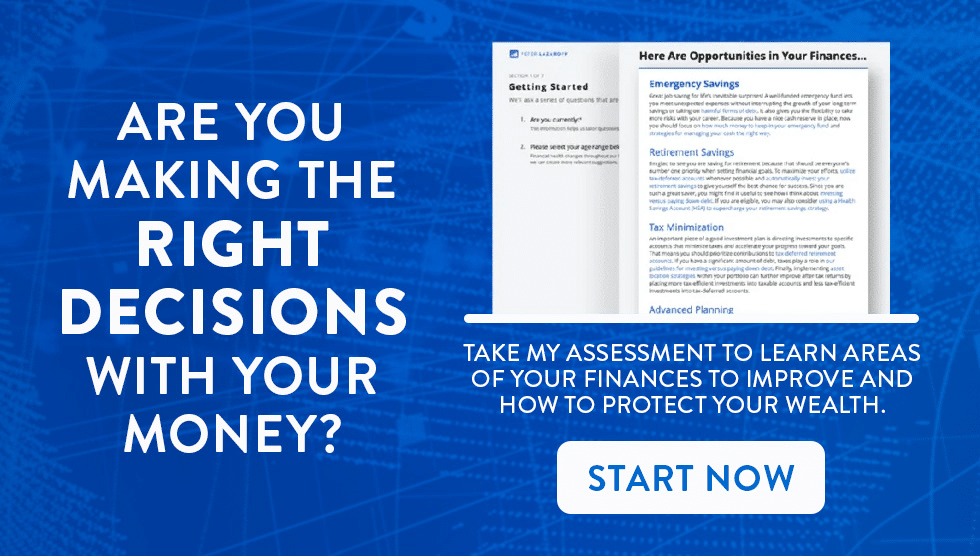
Disclosure: This content, which contains security-related opinions and/or information, is provided for informational purposes only and should not be relied upon in any manner as professional advice, or an endorsement of any practices, products or services. There can be no guarantees or assurances that the views expressed here will be applicable for any particular facts or circumstances, and should not be relied upon in any manner. You should consult your own advisers as to legal, business, tax, and other related matters concerning any investment.
The commentary in this “post” (including any related blog, podcasts, videos, and social media) reflects the personal opinions, viewpoints, and analyses of the Plancorp LLC employees providing such comments, and should not be regarded the views of Plancorp LLC. or its respective affiliates or as a description of advisory services provided by Plancorp LLC or performance returns of any Plancorp LLC client.
References to any securities or digital assets, or performance data, are for illustrative purposes only and do not constitute an investment recommendation or offer to provide investment advisory services. Charts and graphs provided within are for informational purposes solely and should not be relied upon when making any investment decision. Past performance is not indicative of future results. The content speaks only as of the date indicated. Any projections, estimates, forecasts, targets, prospects, and/or opinions expressed in these materials are subject to change without notice and may differ or be contrary to opinions expressed by others.
Please see disclosures here.









